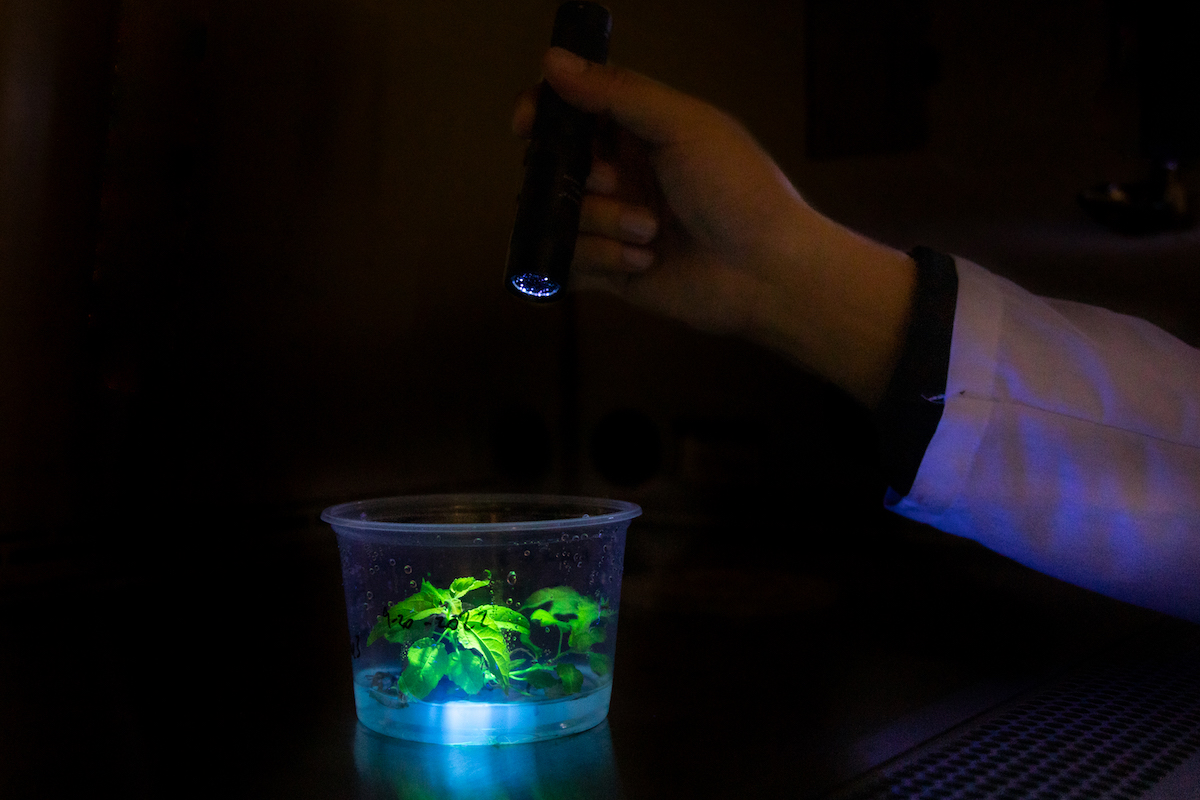
New Gene Stacking Method Speeds Up Genetic Transformation
June 14, 2023| |
Scientists from the Oak Ridge National Laboratory (ORNL) successfully inserted multiple genes into plants using only a single step. The new method could revolutionize the way researchers around the world conduct genetic transformation.
The technique, known as gene stacking, replaces the laborious way of individually inserting genes into a targeted plant's DNA. Each transformation also requires its own confirmation test to determine if the gene is in the right spot and orientation to exhibit the intended desired trait. Gene stacking allows scientists to do multiple gene insertions and confirmation tests in just one transformation. The new delivery method uses intein protein segments, which can naturally split off from larger proteins then splice back together to create new proteins. The inteins were used to create a split selectable marker system that simultaneously inserted four genes, including markers, into plants. Gene stacking was successfully demonstrated and confirmed using tobacco, Arabidopsis thaliana, and poplar.
ORNL scientists are already modifying the technique to allow 12 gene insertions at once, two of which are marker genes. They are optimistic that their gene stacking method can support as many as 20 gene insertions at a single transformation.
Read the ORNL news release and the free-access article in Nature Communications Biology to learn more.
| |
You might also like:
- New Multiple Gene Stacking Technique Could Develop Crops with Higher Yields and Better Traits
- Chinese Scientists Develop Purple Rice Using Novel Gene Stacking System
- Gene Stacking Provides Better Resistance in Potato against Late Blight
Biotech Updates is a weekly newsletter of ISAAA, a not-for-profit organization. It is distributed for free to over 22,000 subscribers worldwide to inform them about the key developments in biosciences, especially in biotechnology. Your support will help us in our mission to feed the world with knowledge. You can help by donating as little as $10.
-
See more articles:
-
Plant
- Canada Approves RNAi Biopesticide Technology Field Study
- Scientists Release the Pan-Genome of of Foxtail Millet
- New Gene Stacking Method Speeds Up Genetic Transformation
- Study Suggests Wheat Crops Threatened by Unprecedented Heat and Drought
- ISAAA Inc. to Hold ASCA6 on September 11-15 in Indonesia
-
Animal
- IAS 114th Anniversary Celebration Highlights Animal Biotechnology Development in the Philippines
-
Health
- Researchers to Develop Gene Editing Therapy for Blindness
- Experts Provide Recommendations for Regulation of Medicinal Products Based on Gene Editing
-
Read the latest: - Biotech Updates (December 10, 2025)
- Gene Editing Supplement (November 26, 2025)
- Gene Drive Supplement (February 22, 2023)
-
Subscribe to BU: - Share
- Tweet

